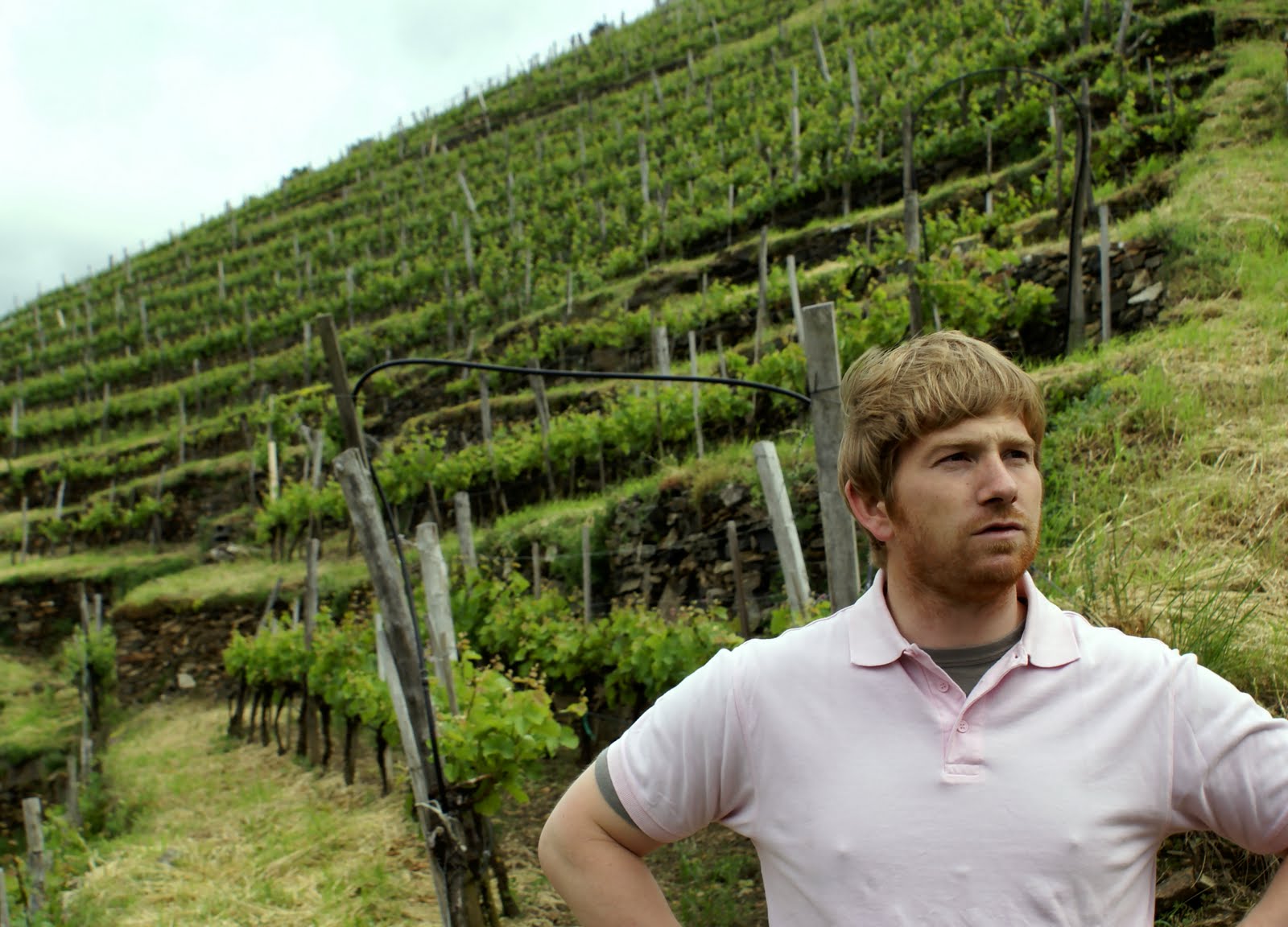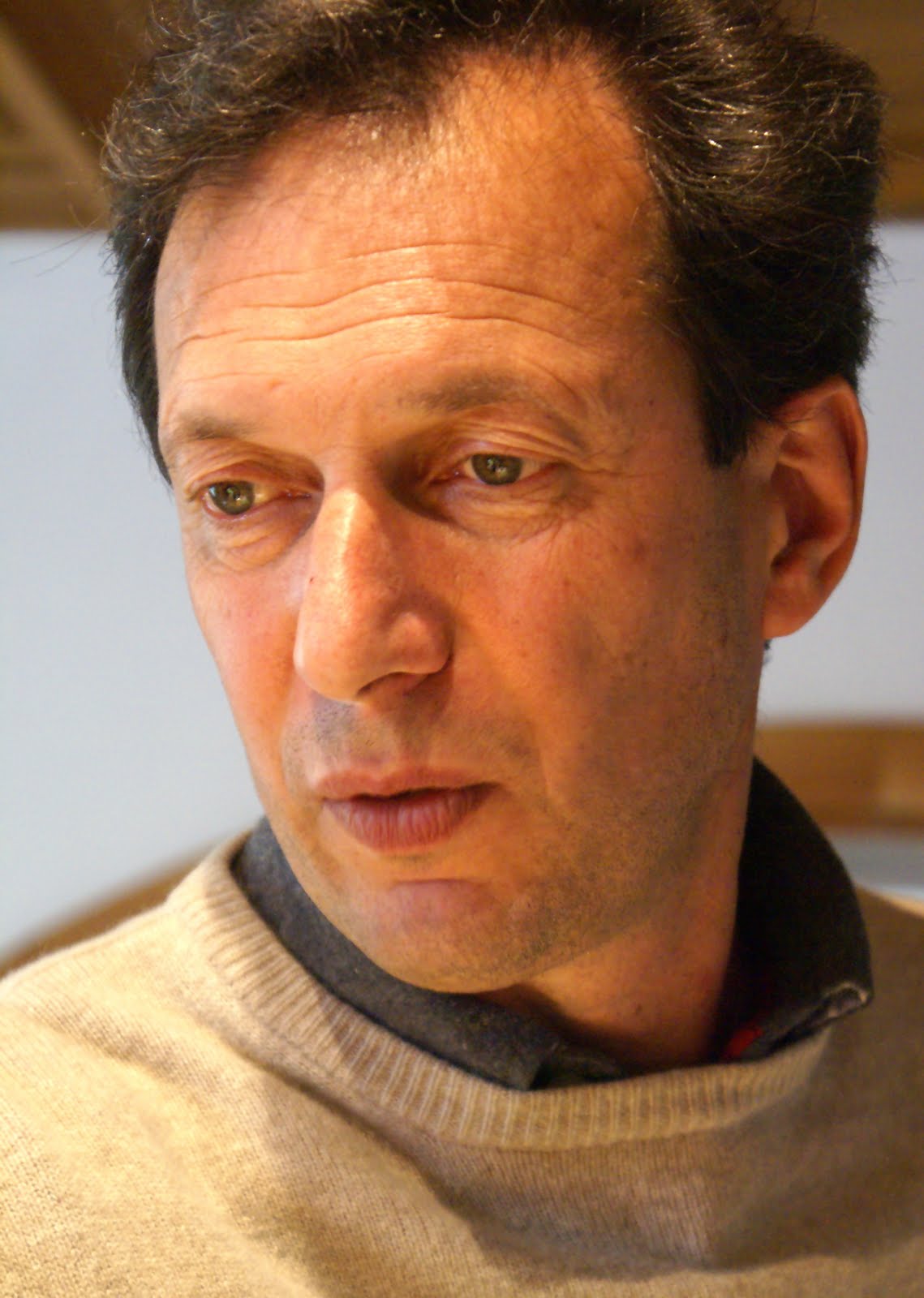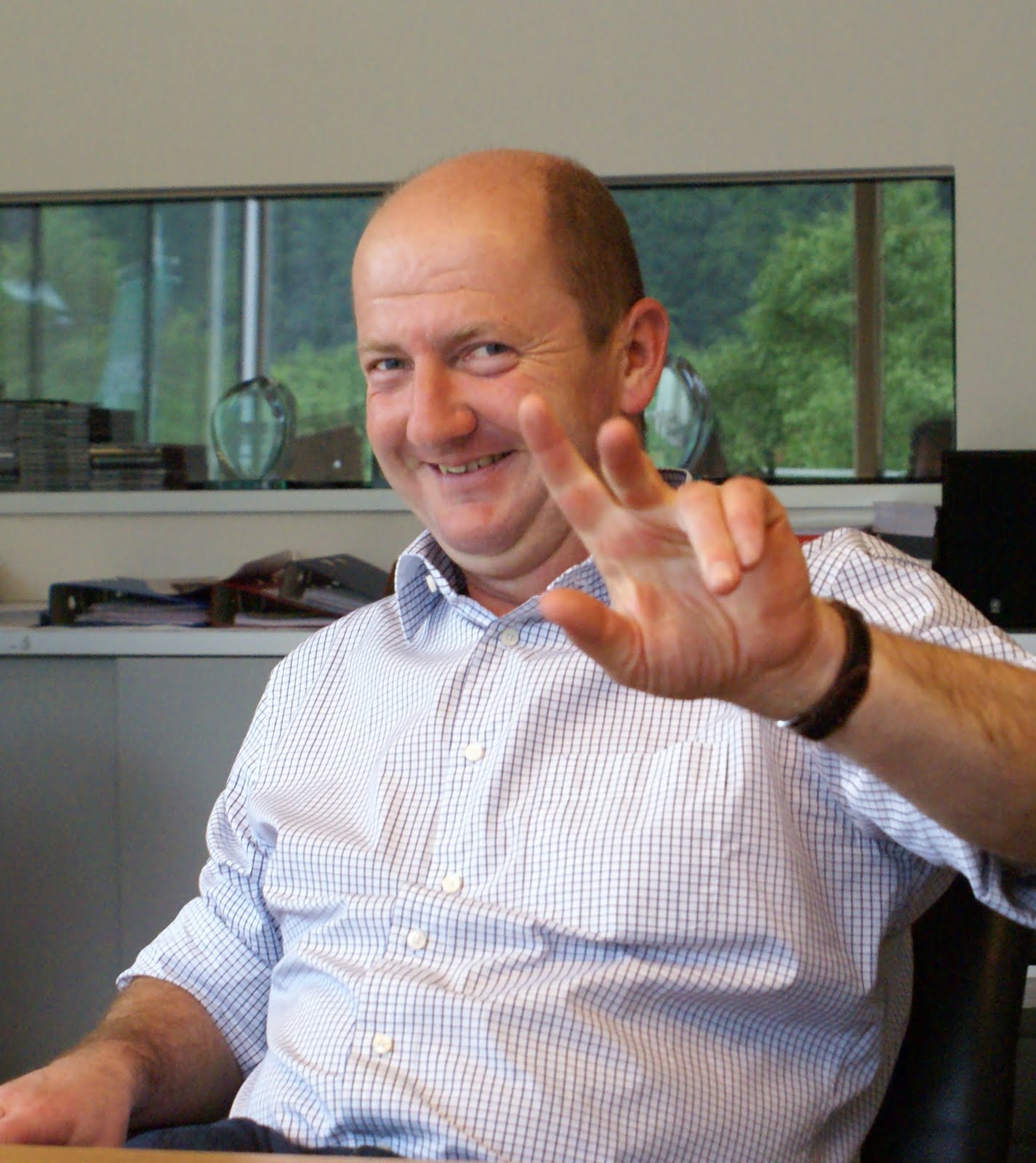In the Wachau: why genes matter
Posted on 2 June 2010
Spent a day in the Wachau region in Austria with its spectacular scenery of terraced vineyards in the narrow valley of the Danube, and its beautiful Rieslings and Grüner Veltliners. We visited some of the region’s giants: Franz Hirtzberger with his powerful, late-picked, botrytis-affected wines from Spitz; Rudi Pichler with his meticulous, modern, puristic approach and transparent wines (the 2009 Kirchweg Riesling has fantastic punch and dimension, and is one of my wines of the vintage); Knoll with his very classic, long-maturing, alluringly spicy wines from the warmer Loiben vineyards.
Franz Hirtzberger Jr. in the spectacular Singerriedel vineyard.
But it was a 2-hour tasting with Toni Bodenstein at the Prager winery that proved the most memorable. Though defining himself as Homo rusticus, Bodenstein has a fantastically thorough approach and one of the deepest knowledge of the vine and terroir that I’ve come across. If you think the geological difference between gneiss, paragneiss and amphibolite have nothing to do with the wine in your glass, taste Prager’s two Rieslings from the Achleiten and Klaus vineyards: basically coming from adjacent parcels on the same hill but on different rock formations, the wines are like night and day, the Klaus an acidic, skinny, inquisitive, stern creature and the Achleiten its solar, open-minded, high-spirited opposite.
Toni Bodenstein: Wachau’s deepest mind?
The 2009 Rieslings here are impressive but the Grüner Veltliners are simply awesome (especially in the context of other 2009s, often excessively soft and rich). Bodenstein made the wise decision of acquiring many old vineyards when he took up the property: now these 1940s and 1950s plantings are delivering wines of great depth and complexity. It has also encouraged Bodenstein to reappreciate and saveguard the old clones of Grüner Veltliner that can be found in those old vineyards. The Wachstum Bodenstein, from a small parcel in the Achleiten that was replanted in 2003 with selected old cuttings from a variety of sourced in the Wachau and other regions in Austria, is a glowing testimony to the complexity and dimension that is lost when just a few ‘approved’ clones are reproduced by vine nurseries and replanted on a large scale by wineries. And yet this wine is towered by the 2009 Stockkultur Grüner Veltliner: painstakingly farmed at a record 16,000 vines/hectare on high narrow terraces are forgotten old clones going back to 1937, giving amazing complexity with a vibrant vegetal sappiness and spicy reminiscences of the Orient.
Rudi Pichler (not) posing for a photo.
No relation to the wine in your glass? On the very contrary; the genetic diversity of our grape varieties is a crucial issue for the future of viticulture and winemaking.
Disclaimer
Accomodation during my stay in the Wachau is paid for by the Austrian Wine Marketing Board. All wines were provided by the producers.




